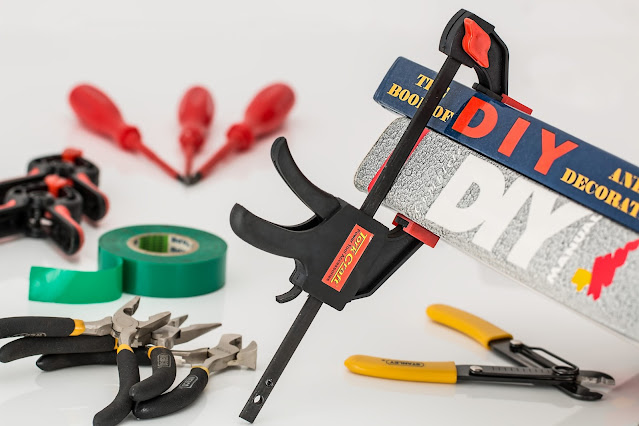💡Table of Contents
- Introduction
- Spotting the Signs: Red Flags for Structural Damage
- Prevention: Keep Structural Damage at Bay
- Roll Up Your Sleeves: House Structure Repair
- Frequently Asked Questions
- Conclusion
Introduction
Home sweet home – it's where the heart is, right? But sometimes, our beloved abodes can face some challenges, like structural damage that requires house structure repair. In this guide, we'll dive deep into the world of structural damage and explore how you can identify, prevent, and repair it to keep your home standing tall and proud for generations to come.
Spotting the Signs: Red Flags for Structural Damage
Before you can tackle structural damage and house structure repair, it's essential to know the warning signs. Keep your eyes peeled for these red flags:
1. Cracks in walls or ceilings
2. Uneven or sloping floors
3. Doors and windows that stick or are difficult to open
4. Gaps between walls and floors or ceilings
5. Bowing or leaning walls
 |
| Image by Laura Shaw from Pixabay |
It's Not Just a Crack in the Wall
Cracks in walls or ceilings may seem innocent enough, but they can be the tip of the iceberg when it comes to structural damage. Hairline cracks are generally harmless, but larger, widening, or diagonal cracks can indicate a more significant issue.
A Floor That's Lost Its Balance
If your floors are sloping or uneven, it might be more than just an annoying quirk – it could signal a foundation problem. Keep an eye out for gaps between the floor and walls or baseboards, as these can also indicate trouble brewing beneath the surface.
Prevention: Keep Structural Damage at Bay
1. Regularly inspect your home for signs of wear and tear
2. Address water damage and leaks promptly
3. Maintain gutters and downspouts to prevent water buildup around your foundation
4. Ensure proper drainage around your property
5. Be cautious of tree roots growing near your foundation
Roll Up Your Sleeves: House Structure Repair
If you do find yourself facing structural damage, don't despair – house structure repair is possible! Follow these steps to get your home back in shipshape condition:
 |
| Image by Steve Buissinne from Pixabay |
Step 1: Call in the Pros
When it comes to structural damage, you don't want to mess around. Consult a structural engineer or a qualified contractor to assess the situation and provide recommendations for repair.
Step 2: Fix the Root Cause
Before jumping into house structure repair, address the underlying cause of the damage – whether it's a leaky pipe, poor drainage, or invasive tree roots. If you don't fix the root cause, you'll find yourself back at square one sooner than you'd like.
Step 3: Repair the Damage
Once you've addressed the root cause, it's time to tackle the structural damage itself. Depending on the extent of the damage, house structure repair may involve:
1. Patching and sealing cracks
2. Reinforcing or replacing damaged beams or supports
3. Underpinning or stabilizing the foundation
4. Installing steel braces or wall anchors to correct bowing or leaning walls
Frequently Asked Questions
Q. How much does house structure repair cost?
A. The cost of house structure repair depends on the extent of the damage and the required repairs. Minor repairs can range from a few hundred to a few thousand dollars, while more extensive repairs can cost tens of thousands.
Q. Is structural damage covered by homeowners insurance?
A. Typically, homeowners insurance covers sudden and accidental structural damage resulting from events like fires, storms, or vandalism. However, damage caused by issues such as foundation settling, tree roots, or general wear and tear may not be covered. It's essential to review your policy and consult with your insurance provider to determine your specific coverage.
Q. How can I tell if structural damage is severe?
A. Signs of severe structural damage include large, widening, or diagonal cracks in walls, sloping floors with significant gaps between the floor and walls, and bowing or leaning walls. It's crucial to consult with a structural engineer or qualified contractor to assess the severity of the damage and recommend the appropriate house structure repair.
Q. How long does it take to complete house structure repair?
A. The timeline for house structure repair depends on the extent of the damage and the specific repairs required. Minor repairs may take just a few days, while more extensive repairs could take weeks or even months to complete.
 |
| Image by Rajesh Balouria from Pixabay |
Conclusion
Structural damage may seem like a daunting challenge, but with the right knowledge and a proactive approach, it's manageable. By staying vigilant for signs of damage, taking preventive measures, and promptly addressing issues when they arise, you can ensure your home remains safe and secure. Remember, when it comes to structural damage and house structure repair, it's always best to consult with professionals to ensure the job is done right. So, keep your home standing tall and give it the love and care it deserves!









0 Comments